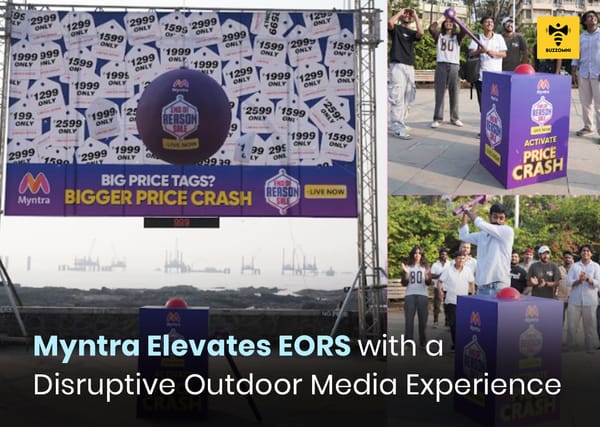The Rise of AI-Driven Measurement in OOH: From Guesswork to Precision Analytics
AI is transforming Out-of-Home (OOH) advertising from guesswork to precision. With big data, computer vision, and predictive analytics, it delivers measurable insights, proving ROI and making OOH as accountable as digital.

Table of Contents
- Introduction
- Audience Demographics at Scale
- Dynamic Impressions Tracking
- Behavioral Attribution
- Creative Performance Insights
- Benefits of AI-Driven OOH Measurement
- The Future of AI in OOH Advertising
- Final Thoughts
Introduction
For decades, Out-of-Home (OOH) advertising has been both powerful and frustrating. Billboards, transit ads, and street furniture deliver unmatched visibility in the physical world, yet the channel has long struggled with one critical weakness: measurement. While digital advertising evolved into a world of precise targeting, impressions, clicks, and conversion tracking, OOH was left relying on traffic counts, surveys, and generalized estimates.
This made it difficult for marketers to fully justify OOH spend. They knew outdoor campaigns drove awareness, but proving their direct impact on business outcomes was nearly impossible. That gap between visibility and accountability limited OOH’s role in modern marketing strategies.
Today, however, that reality is changing. The integration of artificial intelligence (AI), machine learning, and computer vision is transforming OOH measurement from guesswork into science. By combining big data, geospatial analysis, and predictive modeling, platforms like BuzzOmni are making outdoor advertising as measurable and performance-driven as digital.
This shift represents a seismic change in how brands plan, execute, and optimize campaigns. Here’s how AI is reshaping the OOH analytics landscape.
Audience Demographics at Scale
In the past, OOH measurement was limited to how many vehicles or pedestrians passed a location. That was helpful for estimating reach, but it revealed nothing about who those people were.
AI solves this by analyzing mobility data, smartphone signals, and location intelligence. These insights allow advertisers to build robust audience profiles based on real behaviors, not just broad assumptions.
A sportswear brand, for instance, can identify billboards that over-index with active lifestyle consumers. A luxury retailer can prioritize premium neighborhoods and travel hubs that attract higher-income segments. What once was a mass-reach medium now has the ability to deliver targeted audience segments at scale.
Dynamic Impressions Tracking
Traffic studies provide static, often outdated estimates of impressions. AI introduces dynamic, real-time measurement. By tracking actual movement patterns, AI can reveal not just how many people pass by a location, but how many are likely to notice the ad—and at what times.
This opens new opportunities for daypart optimization. A coffee brand can maximize impressions by focusing on morning commuters. A food delivery service can boost evening exposure. Seasonal variations, event-driven surges, and even weather-based traffic changes can all be factored into impression counts.
The result is a far more accurate picture of campaign reach, one that advertisers can adjust in real time.
Behavioral Attribution
Perhaps the most significant breakthrough is attribution. For years, OOH lacked the ability to connect exposure to consumer action. AI-driven attribution modeling now links outdoor impressions with real-world outcomes such as:
- Store visits.
- Website traffic.
- Mobile app downloads.
- Online purchases.
Consider a quick-service restaurant chain. AI can show how many people who passed its billboard within a set timeframe later visited a location. An entertainment brand can see how outdoor exposure correlates with streaming subscriptions.
By proving direct ROI, attribution elevates OOH from an awareness channel to a performance marketing channel.
Creative Performance Insights
Creative has always been at the heart of OOH’s impact, but until recently, measuring effectiveness was subjective. AI, through computer vision and attention analysis, is changing that.
Marketers can now understand:
- Whether digital creatives outperform static formats.
- How interactive or 3D billboards drive engagement.
- Which design elements—color, text size, imagery—capture attention most effectively.
These insights allow brands to refine their creative strategies with confidence, ensuring every campaign is not just placed well but designed for maximum impact.
Benefits of AI-Driven OOH Measurement
The integration of AI into OOH analytics unlocks several critical advantages:
- Precision over estimates – Campaigns are informed by accurate, real-time data rather than broad assumptions.
- Cross-channel integration – OOH metrics can now be aligned with digital KPIs, making it a natural fit in omnichannel strategies.
- ROI tracking – Attribution ensures OOH investments can be tied directly to business outcomes.
- Smarter planning – AI guides decisions about locations, timing, formats, and creative, reducing waste.
- Campaign optimization – Marketers can pivot mid-flight based on live performance insights.
Collectively, these benefits transform OOH into a medium that combines the scale of physical visibility with the accountability of digital performance.
The Future of AI in OOH Advertising
Looking ahead, the rise of programmatic DOOH (Digital Out-of-Home) will only accelerate the role of AI. Programmatic platforms allow advertisers to buy, adjust, and optimize outdoor placements in real time. But this ecosystem depends on accurate, AI-driven measurement to justify spend and guide decisions.
The vision is clear: OOH will become as measurable, targetable, and accountable as online media—while retaining its unique real-world presence. This convergence of scale, precision, and cultural relevance positions OOH as one of the most powerful channels of the future.
Final Thoughts
AI has turned OOH’s greatest weakness—measurement—into its greatest strength. What was once a channel plagued by guesswork is now powered by precision analytics, enabling advertisers to track performance, prove ROI, and optimize campaigns like never before.
For brands, OOH is no longer just about being seen. It’s about driving measurable action, delivering accountability, and earning a place at the center of data-driven marketing strategies. With platforms like BuzzOmni’s AI-driven OOH measurement and analytics solutions, advertisers can harness the full potential of outdoor media with the same confidence they bring to digital.
As marketers demand smarter, more integrated solutions, AI will ensure OOH remains not just relevant, but indispensable, in the evolving advertising mix.



